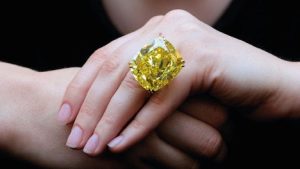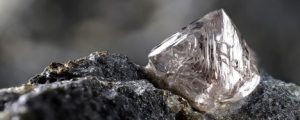Diamonds have captivated looks and souls since ancient times, becoming a symbol of luxury and status. However, rarely does anyone think about where these unique minerals come from. In this article we will look at key aspects related to their origin in nature.
The formation of diamonds is a complex and multi-year process that includes a number of chemical and physical stages. It can occur both in natural conditions and be artificially simulated.

Basic elements in the structure
How diamond is formed in nature is a question that requires understanding from the point of view of chemical composition. The main element of diamond is carbon. The structure of diamond is a tetrahedral lattice in which carbon atoms are connected by covalent bonds.
- The specific distribution of atoms provides unique properties: high hardness, transparency and gloss;
- The purity of a diamond depends on the impurities and defects in the crystal lattice.
Chemical composition and molecular structure
What does a diamond come from? Diamond is an allotropic form of carbon, with covalent bonds between atoms forming a tetrahedral crystal lattice. This unique structure provides the mineral with outstanding mechanical properties, such as high hardness and abrasion resistance.
- Carbon content: 99.95%.
- Specific density: 3.50-3.53 g/cm³.
- Hardness on the Mohs scale: 10.
Physical and mechanical properties
To understand the formation of diamonds, it is necessary to become familiar with their physical characteristics.
- Refraction of light: 2.42.
- Thermal conductivity: 900-2320 W/(m K).
- Compressibility: 0.000011 GPa⁻¹.
Evaluation parameters and classification
The quality of a diamond is assessed by four main parameters, known as the “four Cs”: Carat, Clarity, Color and Cut.
- The carat determines the mass of a diamond and is the basic unit of value.
- Clarity is assessed based on the presence of inclusions or defects in the diamond's structure.
- The color can vary from absolute transparency to yellowish and brown shades.
- The cut determines the quality of the stone's processing and its ability to reflect light.
Mining sources and locations
How do diamonds appear in nature and where can they be found? The main diamond mining regions are Russia, Botswana, Canada and Australia. The following sources are identified:
- kimberlite pipes: most common source of production;
- marine sediments: diamonds can be found in marine sands and gravels;
- Secondary sources: Diamonds can be extracted from river sediments or soil.
Understanding the technical characteristics of diamonds is critical to assessing their quality, value, and use in a variety of industries, from jewelry to industrial applications.The scientific study of these parameters also provides valuable data on the origin of diamond in nature, which can be useful to geologists and mineralogists in their research.

The depths of the earth as a source of wealth
One of the most interesting aspects is where diamonds are formed. The formation of this stone requires extreme conditions, which can be found at depths of 150 to 200 km below the earth's crust. There, at temperatures from 900 to 1,300 degrees Celsius and pressure of several tens of gigapascals, diamond crystallizes from carbon. This process is called diamondogenesis and can take from several million to a billion years. Diamonds rise to the Earth's surface during volcanic eruptions, sometimes being preserved in kimberlite pipes or lamproite rocks.
Factors affecting mineral quality
How diamonds are formed at the micro level depends on many factors. For example, the cooling rate, the type of carbon source, and the presence of impurities can significantly affect the properties of a diamond.
- The faster the cooling occurs, the less likely impurities will appear.
- The source of carbon can be either organic (from vegetation and plankton) or inorganic (from the Earth's mantle).
- The presence of impurities and radioactive elements can change the color and luminosity of the stone.
The most famous diamond jewelry
One of the most famous diamond pieces is the British Empire Crown, which features the famous Cullinan Diamond. This diamond was originally 3,106 carats and was divided into several large fragments, the largest of which is the "Star of Africa" or Cullinan I, weighing 530.2 carats.
Other interesting diamond jewelry:
- Another famous piece of jewelry is the scepter of the Russian Empire, decorated with the Orlov diamond, weighing 189.62 carats.
- The famous Tiffany necklace with the 128.54-carat Yellow Tiffany diamond is considered one of the most expensive and rare pieces of jewelry. This diamond was discovered in South Africa and purchased by Tiffany & Co in 1878.
- The Hope Diamond is one of the most famous blue diamonds in the world, weighing 45.52 carats. This diamond is famous not only for its unique color, but also for the myths about the curse that supposedly accompanies it.
- The Kohinoor (Mountain of Light) diamond weighs 105.6 carats and is considered one of the largest diamonds in the world. Now adorns the British crown of the Queen Mother.
- The Regent Diamond weighs 140.64 carats, this diamond adorns the French crown and is kept in the Louvre.
Results of the journey from mantle to jewelry
The origin of the diamond mineral includes a number of stages - from crystallization at enormous depths to its rise to the surface and subsequent cutting. Understanding this process is not only interesting, but also necessary for assessing the quality and value of a jewelry stone.
Now, knowing where diamonds come from, we can confidently say that each diamond is not just a stone, but also a unique result of a multi-million, and sometimes multi-billion-dollar, process of natural or artificial origin.


 0
0





